Leonora Carrington
Leonora Carrington (1917–2011)
Born into a wealthy family in England, Leonora Carrington spent most of her life in Mexico, where she passed away at the age of ninety-four. Rebellious by nature, she was expelled from two schools before, against her parents’ wishes, enrolling in an art school in London.
Carrington became involved in the Surrealist movement, where she met the artist Max Ernst. The two fell in love and moved in together in France in 1937. With the outbreak of World War II, Ernst was arrested by French authorities as an enemy alien because of his German nationality. His imprisonment devastated Carrington, who fled to Spain. Struggling with anxiety and delusions, she suffered a breakdown in Madrid and was committed by her family to a psychiatric hospital. While institutionalized, she sought the help of a Mexican diplomat she knew; soon after, they married, and she obtained passage on a ship to Mexico.
Once in Mexico, Carrington began a new phase of artistic exploration, turning inward and transforming her painting style. Her works often feature animals, humans, and hybrid beings. She frequently painted a white horse or a hyena as her own symbolic alter egos. In her art, the body is unstable—shifting across gender, species, and even between life and death.
Her paintings carry a dreamlike quality. They are not frightening or dark, but rather resemble strange dreams or portals leading to another reality filled with wonder.
Current & Recent Exhibition
Artworks
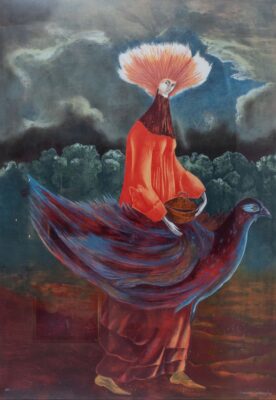
已故鷓鴣夫人的肖像
Portrait of the Late Mrs Partridge
石版畫、手工紙
Lithograph on Handmade Paper
100 x 70 cm, 2011
Price on Request
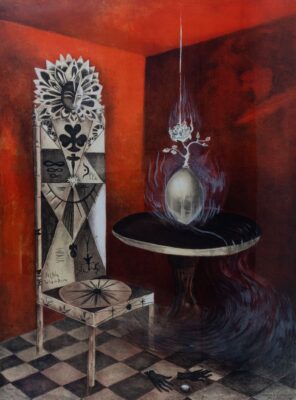
圖哈德達南神族第一任領袖:大地之神達格達(Daghda)的王位
The Chair, Daghda Tuatha dé Dannaan
石版畫、手工紙
Lithograph on Handmade Paper
80 x 60 cm, 2011
Price on Request
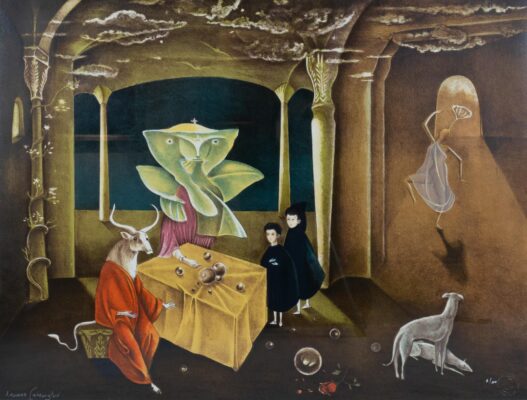
然後我們見到牛頭神米諾陶的女兒
And Then We Saw the Daughter of the Minotaur
石版畫、手工紙
Lithograph on Handmade Paper
60 x 80 cm, 2011
Price on Request
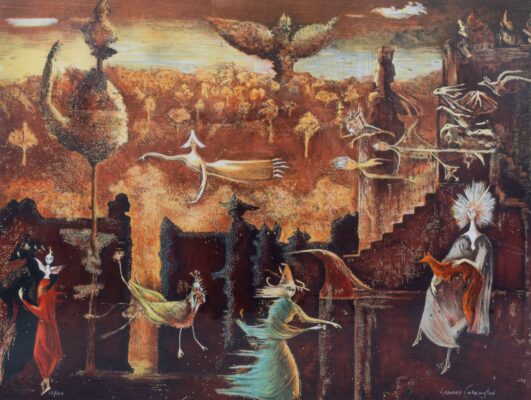
999
Nine Nine Nine
石版畫、手工紙
Lithograph on Handmade Paper
81 x 101 cm, 2011
Price on Request
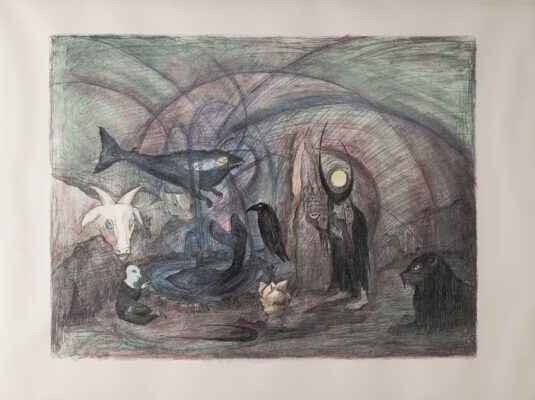
烏鴉湯
Crow Soup
石版畫
Lithograph
40 x 60 cm, 1997
Price on Request
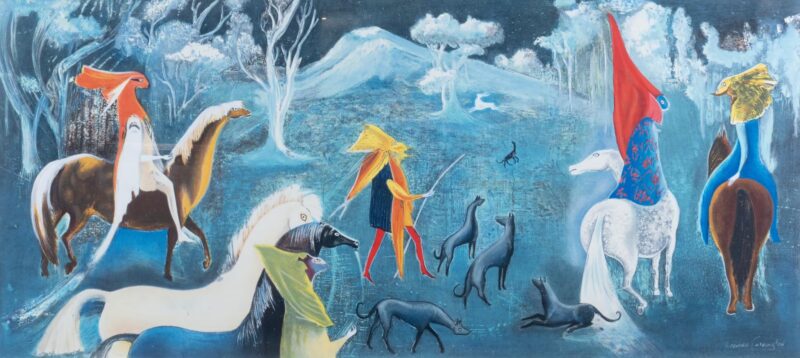
騎在馬上的神奇人物
Figuras Fantásticas a Caballo
石版畫、手工紙
Lithograph on Handmade Paper
50 x 110 cm, 2011
Price on Request



 中文
中文